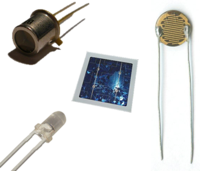
Photo from wikipedia
Abstract In the present study, a structural health monitoring (SHM) method for floating offshore wind turbines (FOWTs) is suggested and tested using operational modal analysis (OMA) with numerical-sensor signals. The… Click to show full abstract
Abstract In the present study, a structural health monitoring (SHM) method for floating offshore wind turbines (FOWTs) is suggested and tested using operational modal analysis (OMA) with numerical-sensor signals. The numerical accelerometer signals along the tower and blade of FOWT in dynamic wind field are used for the OMA. The numerical-sensor signals are simulated using a time-domain turbine-floater-mooring fully-coupled dynamic simulation computer program. To perform the SHM of a FOWT through OMA, natural frequencies, displacement mode shapes (DMS), and curvature mode shapes (CMS) of the tower and blades are obtained and analyzed. The modal properties are systematically compared between the intact and damaged conditions. Their differences are used for damage detection. The results show that CMS is found to be the most effective modal property to detect damage locations and intensities. The performance of the damage detection based on the OMA-CMS analysis is verified by independent FEM (finite element method) results. This study is unique in that the SHM using OMA and CMS for FOWTs is implemented including the floater-tower-blade coupling effects. The technology can contribute to the design of remote SHM system for future FOWTs. A further validated model with field data may build up a huge database for various damage scenarios so that it can be applied to digital-twin-based smart health monitoring technology.
Journal Title: Ocean Engineering
Year Published: 2019
Link to full text (if available)
Share on Social Media: Sign Up to like & get
recommendations!